Ebikes 2017
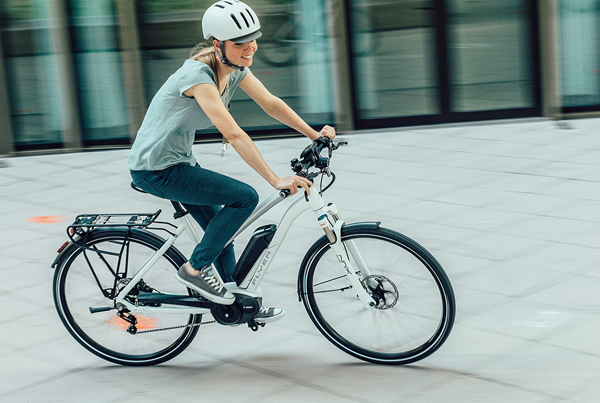
A few shops around Australia claim to offer the biggest range of electric bikes, but there’s now much more of a range than any one shop can offer. Simon Vincett surveys the current market.
Though road cycling is the Formula One of the cycling world with its glamorous image, the fastest growing sector of day-to-day riding is ebike riding. Electric motors are appearing on all sorts of bikes and these ebikes are popping up in bike shops, as hire bikes and in workplace bike fleets. Their popularity is built on the confidence they offer the rider, from assistance of between 30 and 300 per cent extra to your pedalling power. Riders can instantly take off faster, ride further and use less effort.
Retailers currently supply more than 50 ebike brands to the Australian market and ebikes were a dominant theme in 2016 at Europe’s premier cycling tradeshow, Eurobike, for a second year in succession. Globally, ebikes are the strongest area of bicycle sales.
The current interest in ebikes in Australia and overseas stems from significant improvements in the technology of electric systems. Bikes with motors to assist them have been around for decades, initially with petrol-fuelled motors and then with basic electric motors powered by lead–acid batteries. Current ebikes use lithium ion batteries, brushless electric motors, sensors and software, providing vastly superior performance and bikes that are lighter, easier to use and with a longer range for the life of the battery.
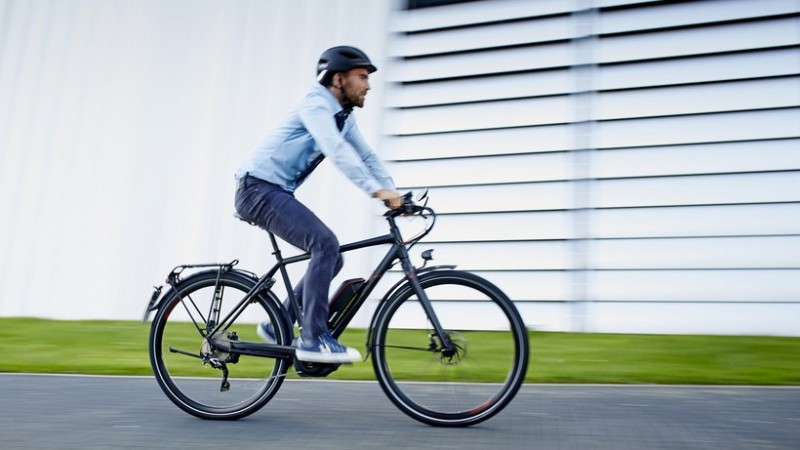 The most sophisticated evolution of the ebike, and now the benchmark, is the pedelec style. These ebikes only operate when the rider is pedalling – a sensor detects when the pedals are rotating and the motor comes in. The motor cuts out when the pedals stop rotating, when the brakes are applied or when the speed exceeds 25km/h. The rider can choose the level of assistance you want from the motor, generally in steps providing 30 per cent additional power up to 300 per cent.
The most sophisticated evolution of the ebike, and now the benchmark, is the pedelec style. These ebikes only operate when the rider is pedalling – a sensor detects when the pedals are rotating and the motor comes in. The motor cuts out when the pedals stop rotating, when the brakes are applied or when the speed exceeds 25km/h. The rider can choose the level of assistance you want from the motor, generally in steps providing 30 per cent additional power up to 300 per cent.
It was in 2012 that the Australian government adopted European standard (EN15194) for pedelecs. It took a further three years for all Australian states and territories to legalise them to ride on roads and paths, but once the legislation was complete a slew of European brands came into Australia, quickly expanding the range of models available and increasing the level of interest in this category of bikes. Pedelecs are now a large proportion, if not the majority, of ebikes sold and ridden in Australia.
The other major variety of ebike – a type that pre-dated the pedelec, continues to evolve and offers compelling unique characteristics – has a throttle instead of a pedal assistance system. In 2011 we predicted that the adoption of the pedelec standard would be the end of throttle bikes but they remain legal as a separate category.
Throttle ebikes can be pedalled like a conventional bicycle or can be propelled by the electric motor, which is governed by the throttle. One brand, eZee, offers both, the pedelec pedal assistance and an over-riding throttle. These throttle ebikes are limited in Australia to having a 200 watt motor, as opposed to the pedelec variety which have a 250 watt motor. This makes throttle ebikes somewhat equivalent to pedelecs in speed, though they do not have a particular cut-out speed like pedelecs.
(The pros and cons to weigh up between pedelecs and throttle ebikes, and many more features to consider, are outlined below.)
As 2017 dawns on the Australian ebike market, Gazelle is still the most widely recognised ebike brand due to having been the premium option for the longest time (from before the adoption of the European standard in Australia in fact – when their pedelecs were limited to 200 watts to meet the previous legislation). But with fashions changing, new converts to ebikes are likely to be drawn to completely different brands.
For instance, the German brand Haibike, which specialises in electric mountain bikes, has just signed a multi-year sponsorship of the Sea Otter Classic, a renowned mountain bike race in California. In a significant move, this famous race included an eMTB category for the first time in 2016.
The motor Haibike uses and the dominant electrical system on the world stage – in terms of hype but also in performance – is Bosch. However, other systems such as Shimano Steps, Impulse and Brose, are competing hard in the centre-drive market.
At the budget-priced end of ebike spectrum, however, there’s still a place for the hub motor systems. In fact, James Leong of Earth Electric Bikes, who sells three times as many hub-motor ebikes as centre-drive units, argues that hub motors have something unique to offer. See below for an explanation of the pros and cons of different motor systems
In terms of styles, the ascendency of the sit-upright, city-bike type has waned and the popular choice – like it’s the 80s all over again – is the mountain bike. How many of these will be used off-road is a moot point, but not many Range Rovers get to range over the hills either. It seems the neutral riding position – not upright but not too far forward – suits the widest variety of people.
And if you want to take to the singletrack, these new e-mountain bikes can do some amazing things and take you to some awesome places.
In practise there are ebike versions of most of the styles of conventional bike, and riders are finding that a motor is a tremendous benefit, particularly with heavy units such as fat bikes or hardworking utility vehicles such as cargo bikes. Ebikes are appearing in workplace bike fleets and as public bikes in city transport networks. Cities around the world are welcoming electric cargo bikes as a preferred freight carrier in their dense and busy inner areas.
See below for an overview of types in the world of ebikes and their pros and cons.
The next big development anticipated for Australia is the arrival of ebikes from the big bike brands, such as Giant, Trek and Merida. These brands have extensive reach into the bike shops around Australia and the industry expects that they will be pushing their ebikes into shops far and wide.
Nathan Reizer of Melbourne Electric Bicycles says the challenge for ordinary bike shops will be to train their staff to sell ebikes. “Sales staff need to know ebikes to be able to sell them,” he contends.
But there is another reason, he argues, that ebike speciality stores will continue to hold an advantage: “We offer a range of brands – the brands we find best fit the market segments. Most bike retailers can’t do that because they’re tied to one brand or distributor. They will have ebikes from Trek because they’re a Trek store. That doesn’t mean a Trek ebike is best for that customer.”
As with all bikes, the onus is clearly on the customer to shop around widely to find the best ebike for them.
Looking further ahead, though perhaps not too far, we see another significant development in the world of ebikes. An industry insider offered a prediction to Ride On that within two years Chinese brands will be offering centre-drive ebikes at significantly cheaper prices than the European brands. China is the world’s biggest manufacturer of ebikes. Its domestic standard has been aligned with the European standard since 2012 and all the ebikes it makes meet EU standards. Chinese brands, such as Bafang, already dominate the market in economical hub-motor ebike systems and their mid-drive systems offer excellent performance at compelling pricepoints.
You can trace Ride On’s back catalogue of articles covering ebike developments in Australia since 2011.
Why get an ebike?
Health
Although it’s a criticism frequently levelled, ebikes are not cheating. Every ride on an ebike is valuable physical activity. Obviously you gain more health benefit the less you use a throttle or the less assistance you ask from the motor, but any ride is a health boost.
Utility
The extra power a motor brings to your legs means you can carry more stuff more easily. That’s why so many cargo bikes come with electric motors now, though a basket or rack on an ebike makes it useful for heading down to the shops too. See below for some very practical ebike types.
Fun
Enjoyment comes from peace of mind and that’s what a motor can bring you: confidence that you’ll keep up with the others, get there and get back again. No one who rides an ebike fails to feel the fun. And ultimately it’s this satisfaction that riding brings that will keep you saddling up. You only have to read this account to see when an ebike was the answer.
And why not?
While it is a greener option than a petrol burning motor, the ebike still uses electricity to charge the battery. There’s also the disposal of the battery to consider. It lasts three to five years before needing to be replaced (depending on your usage of the bike).
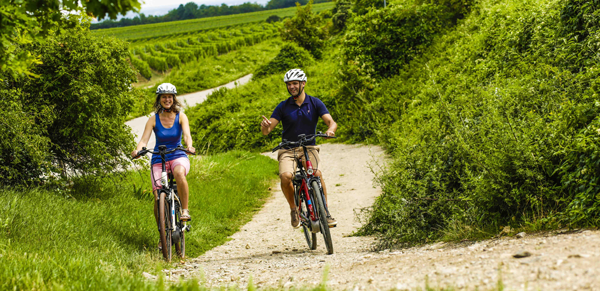 Ebike buying guide
Ebike buying guide
Pedelec or throttle
Most of the ebikes you’ll come across in Australia are pedelecs, where the motor only operates when you pedal. In Australia these have a maximum output of 250 watts and are speed limited to 25km/h.
There are also ebikes where the motor is operated by a hand throttle. This means that, whether you’re pedalling or not, the motor can drive the bike. Throttle ebikes are limited to 200 watts output but have no speed cut out.
A throttle uses up the battery faster – the pedelec system is more efficient and uses less power.
Both pedelec and throttle ebikes have sensors on the brakes that cut the motor when the brakes are applied.
Mid-drive motor or hub motor
Mid-drive motors sit between the pedals (or cranks, hence the motor’s other name, crank-drive). These are the motors that the premium ebike systems use, the likes of Bosch, Impulse, Brose and Shimano. These systems employ multiple sensors to quickly respond to your riding to intelligently support you. For instance, a torque sensor knows when you are pushing hard and tells the motor to push hard too. Similarly when you pedal softly, the motor backs off and pushes gently.
For experienced riders this is like a conventional bike – the harder you push, the greater the power output – and this is desirable. But not everyone wants their ebike to ride like a conventional bike. If you have bad knees, for instance, you don’t want to have to push hard on the pedals to get a strong response.
“People are pushed to Bosch,” says James Leong of of Earth Electric Bikes. “A hub motor with just a cadence sensor delivers consistent power whenever the pedals are spinning.”
Another solution for someone who can’t stomp on the pedals is a throttle ebike.
A hub motor can be on the front wheel or on the rear wheel. Some argue pros and cons of each placement and perhaps that the centre offers better balance, but except for mountain biking it makes little difference. Obviously you cannot have hub gears with a rear hub motor.
Batteries
Any ebike can be ridden purely as a bicycle with no assistance from the motor. However, the electrical system, particularly the motor and the battery, add about 5kg to the bike, so you need at least the minimum level of assistance to compensate for that weight. In practice, most people do most or all of their riding with the highest level of assistance, although the more assistance you ask from the motor, the faster the battery is used up, the shorter the distance you can cover with assistance, and the sooner you need to replace the battery. Using a throttle also uses the battery up faster.
Batteries are becoming more powerful but not larger (though more dense and therefore heavier). The capacity of a battery is expressed as its voltage and amp hours, 36v 14.5ah for instance. A handy way to compare batteries is to multiply the volts and amp hours to make a figure in watt hours. So if a battery is 36v 11ah it has 396wh capacity. Compare this to a battery that’s 24v 16ah, which has 384Wh, a lesser capacity.
Replacement batteries don’t come cheap, costing at least $600. Depending your usage of the bike, you would need a new battery every three to five years. Be sure to buy from a reputable company so that your format of battery will be available by the time you need a new one.
British ebike company Wisper suggest that longer ebike battery life comes from three simple rules:
- Never leave your battery fully discharged.
- Always leave your battery at least 50% charged.
- If your battery is left unused for longer than eight weeks recharge it for two hours.
Things you’ll hear
“Torque”: this is the measure of how strong the motor is to keep the wheel rotating in spite of an opposing force such as gravity on a steep hill. The greater the torque the stronger the motor. For a motor compliant with the Australian standards (street legal) the torque might range from about 60 newton metres to about 90 newton metres.
Grand claims of mighty torque should be taken with a grain of salt. A test ride involving a steep hill is your best guide to how much torque the system has. You’ll also hear debate about the ability of different systems to maintain maximum torque output. Again, a test ride is your best guide to whether the motor is pulsing or consistently strong. Don’t forget to use a low gear for a steep uphill – the motor needs help from the gears just like your legs do. Also you should ask yourself how much weight you’re going to be carting up a long steep hill before worrying too much about maximum torque.
“Hack”: Ebike motors are limited to meet the legal standard of power output. It is possible to de-limit them. This comes up in many conversations about ebikes but it is not legal. By the way, “street legal” means legal for shared paths as well. More powerful motors for “off-road use” can only legally be used on private property.
Expect
- To spend $2,000: For an up-to-date ebike, something less than $2,000 should be approached with caution. To be sure, buy the bike from a shop, rather than online. This should give you some recourse if the bike is unsatisfactory in some way and also ensure that the bike is built up by a professional.
- Good brakes: Ebikes are heavy and have more momentum than a conventional bike, so they need superior braking power, such as from disc brakes, hydraulic rim brakes or some form of good powerful brakes.
- To buy a decent lock: This is an expensive bike – you’ll need a high-security lock to secure it. Budget to spend at least $100.
Nice to have
- Integrated front light: If you’re carrying a big battery around, why not have lights that are always there and always charged? Even better if you get a wired-in rear light too.
- Automatic gears: The NuVinci Harmony NSync and Di2 with Shimano Steps systems provide an automatic transmission that changes gear for you. Each of these two systems have different characteristics that some riders will love and some hate, but with such obvious benefits we can expect refinement that will make automatic transmission more common in the future.
- Regenerative braking: This is a feature that captures energy from the motion of the wheel – in a similar way that a dynamo operates – while you’re braking. This then feeds back into the battery. It also aids your braking by creating drag in the motor. This is particularly useful on long descents. On some systems you can control the amount of drag by choosing the level of regenerative braking.
The world of ebikes
We’ve been test riding ebikes since 2011 and, including the latest models we’ve ridden when preparing this article, our field notes now cover nearly 100 different models. The ones pictured here are our recommendations in each category, and the listed models are good choices too.
Around town
Don’t get sweaty, or defeated by a headwind or hills. A motor increases how far you can commute on a bike.
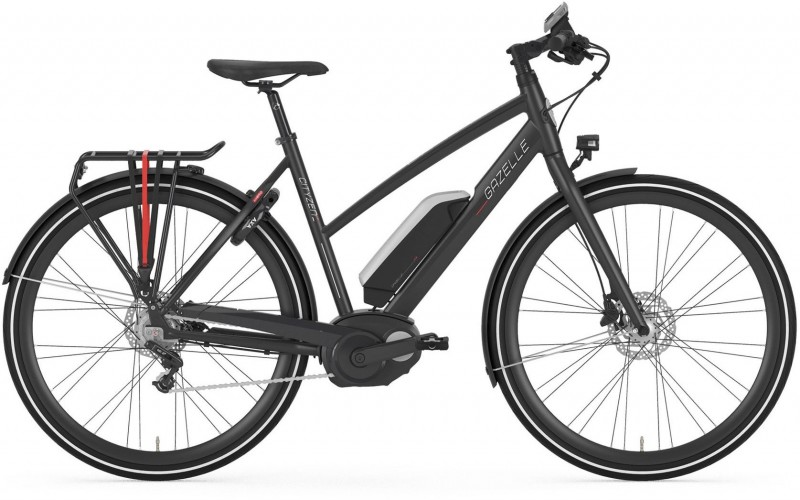
Gazelle CityZen: This flat-bar format is a popular commuting style in Europe. Compare: Kalkhoff Integrale, Peugeot Australie, Gepida Alboin, Trek Conduit+.
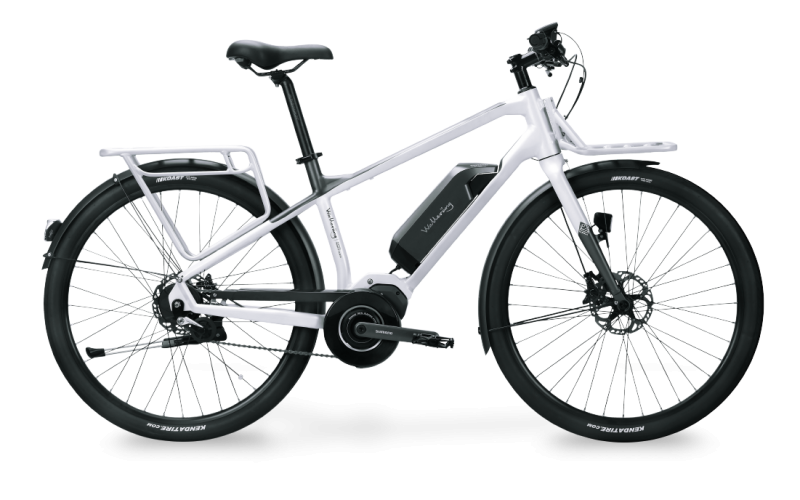 Wallerang SmartBike: Mountain bike format with modular racks. Compare: Earth Prime UI5, Ezee Forza.
Wallerang SmartBike: Mountain bike format with modular racks. Compare: Earth Prime UI5, Ezee Forza.
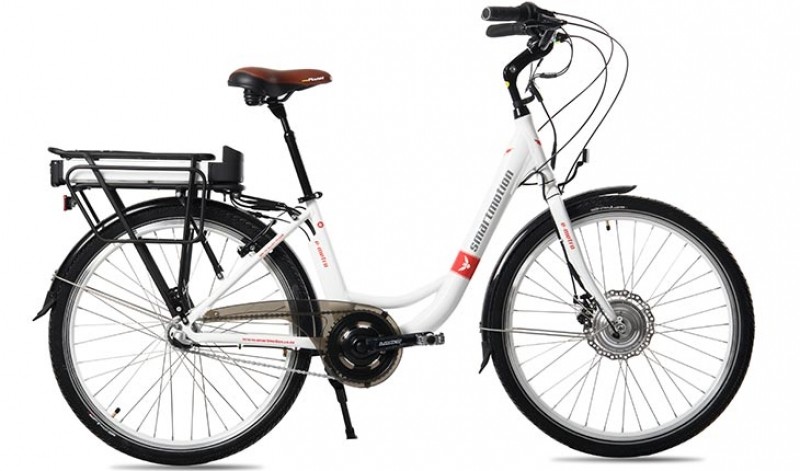 Smartmotion E-City: The classic upright city-bike style ebike. Compare: Ezee Sprint, PowerPed, Sinus, Gazelle Ultimate, Ordica Classic Pro.
Smartmotion E-City: The classic upright city-bike style ebike. Compare: Ezee Sprint, PowerPed, Sinus, Gazelle Ultimate, Ordica Classic Pro.
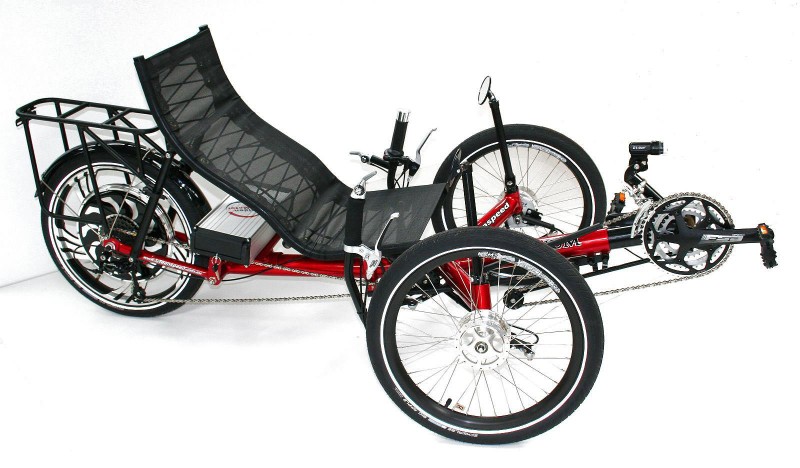 Greenspeed Magnum: Recumbents can be ebikes too.
Greenspeed Magnum: Recumbents can be ebikes too.
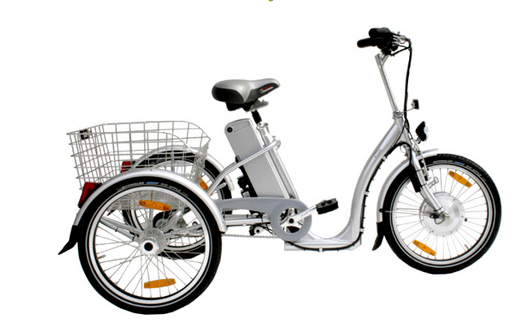 Ezee Carro. A tricycle takes balance out of the equation. Compare: Italwin, Gomier.
Ezee Carro. A tricycle takes balance out of the equation. Compare: Italwin, Gomier.
Family bikes and cargo bikes
Carry more in more comfort with a motor to assist you.
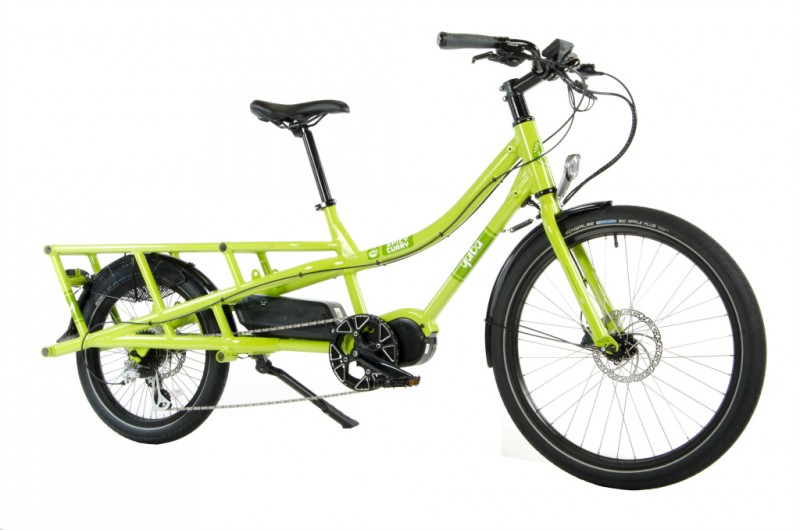 Yuba Spicy Curry: This is the longtail format e-cargo bike. Compare: Ezee Expedir.
Yuba Spicy Curry: This is the longtail format e-cargo bike. Compare: Ezee Expedir.
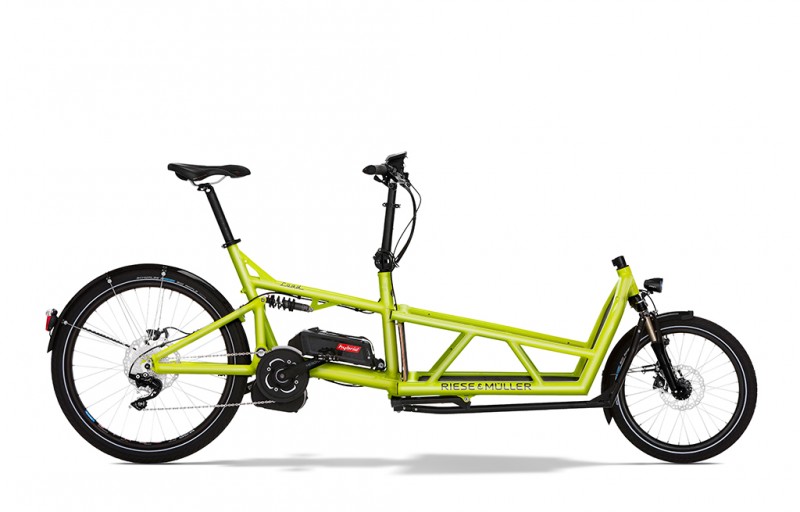 Riese & Muller Load: The long-john-type cargo bike with electric motor assist. Compare: Bullitt, Urban Arow.
Riese & Muller Load: The long-john-type cargo bike with electric motor assist. Compare: Bullitt, Urban Arow.
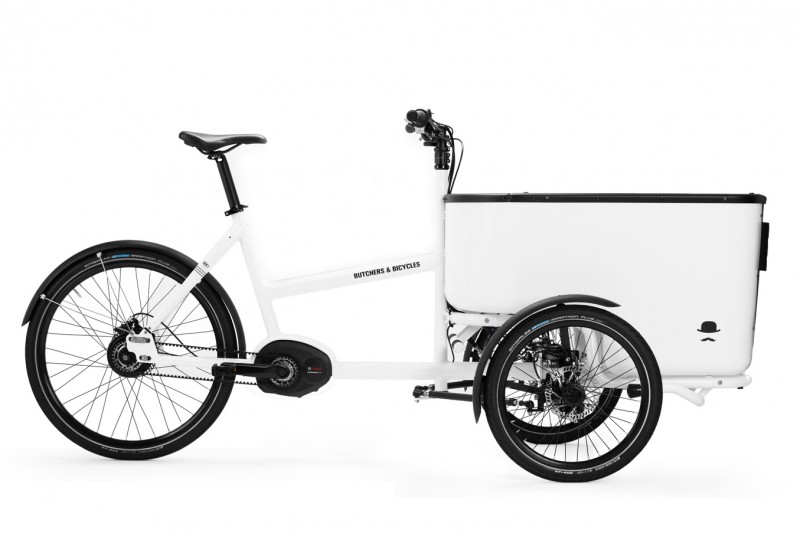 Butchers and Bicycles Mk1: The box cargo trike with motor. Compare: Triobike.
Butchers and Bicycles Mk1: The box cargo trike with motor. Compare: Triobike.
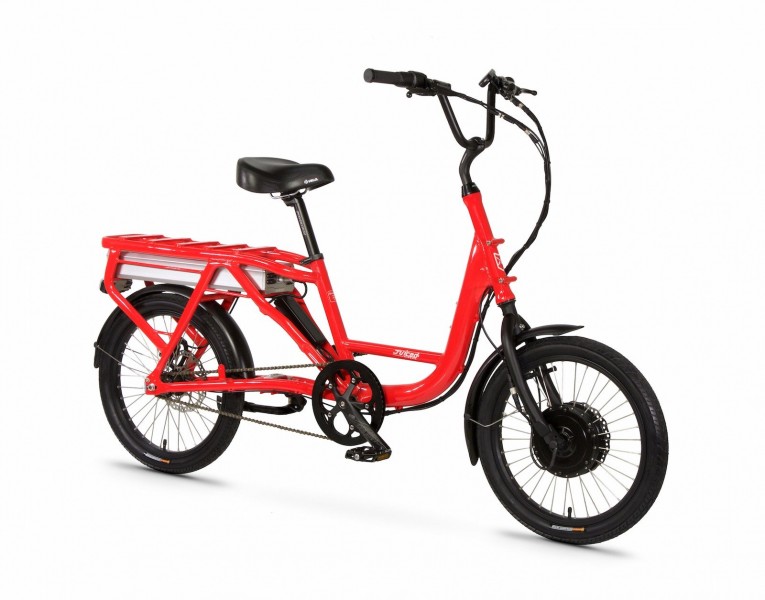 Juiced: A compact workhorse with a mighty payload and massive battery.
Juiced: A compact workhorse with a mighty payload and massive battery.
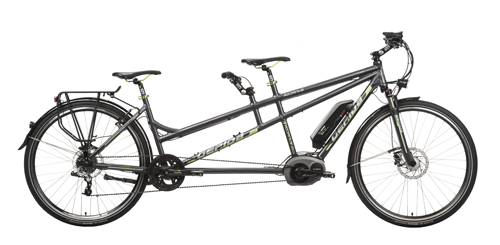 Gepida Rodanus. A tandem ebike.
Gepida Rodanus. A tandem ebike.
Recreational riding
Have confidence to complete longer circuits and to keep up with the group. For path riding, any of the ‘Around town’ bikes would do well. Have a look at kits below as well because it might be best for you to convert your current bike.
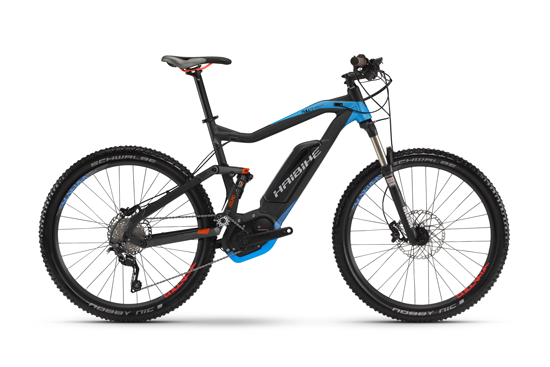 Haibike XDuro: Mountain ebikes may uphills a breeze. Compare: Focus Jarifa, Trek Powerfly, KTM Macina, Scott E-Genius.
Haibike XDuro: Mountain ebikes may uphills a breeze. Compare: Focus Jarifa, Trek Powerfly, KTM Macina, Scott E-Genius.
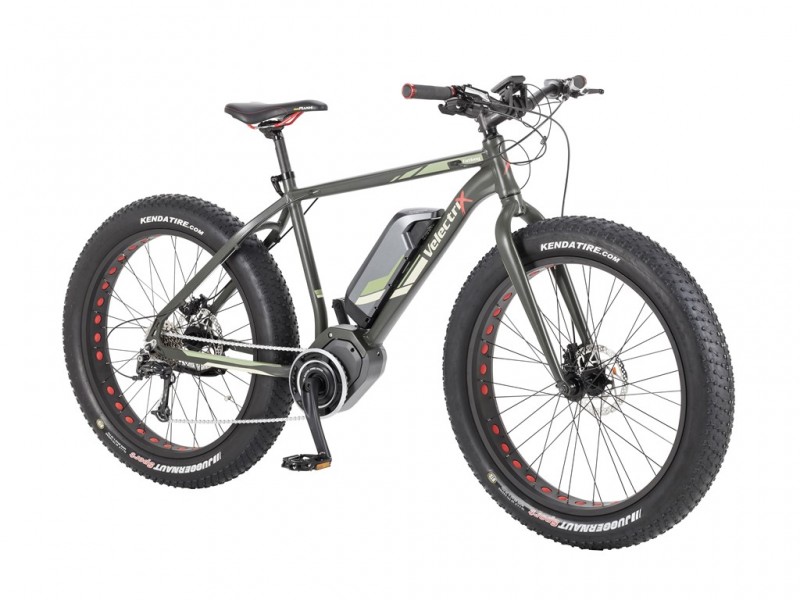 Velectrix Fatboy: Fatbikes allow you to take on sand and snow, and a motor is a big help with the weight and rolling resistance. Compare: Dyson Thredbo fatbike, KTM Macina Freeze, Haibike Fatsix.
Velectrix Fatboy: Fatbikes allow you to take on sand and snow, and a motor is a big help with the weight and rolling resistance. Compare: Dyson Thredbo fatbike, KTM Macina Freeze, Haibike Fatsix.
Compact and folding
Compact ebikes fit into small apartments, small workplaces and can move more easily through dense urban environments. Compact ebikes are also good for bike fleets because they are small enough for the smallest rider. Folding ebikes travel with people in their caravans, yachts and planes
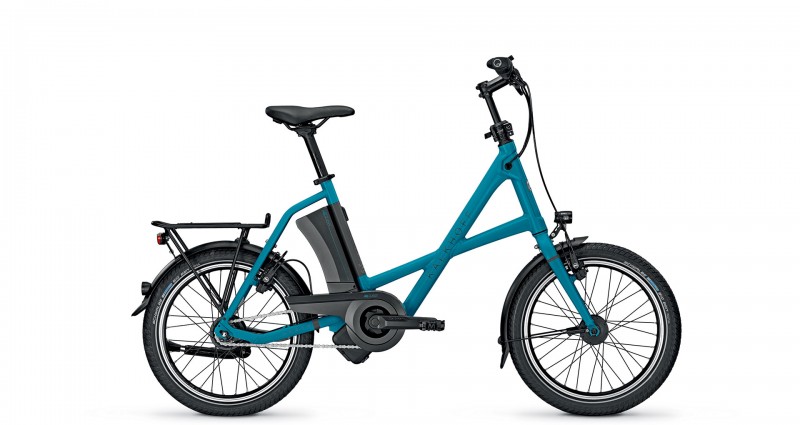 Kalkhoff Sahel: Compact without folding. Compare: Riese & Muller Pony.
Kalkhoff Sahel: Compact without folding. Compare: Riese & Muller Pony.
 Velectrix Foldaway: Folding for maximum compactness. Compare: Ezee Viento, Smartmotion E-20, Powerped Sonata.
Velectrix Foldaway: Folding for maximum compactness. Compare: Ezee Viento, Smartmotion E-20, Powerped Sonata.
Touring
As long as you have a way to recharge the batteries, ebikes enable you to cover long distances. With a motor to help with the weight, you can carry everything you need more easily. Or you could travel light and just enjoy the assistance.
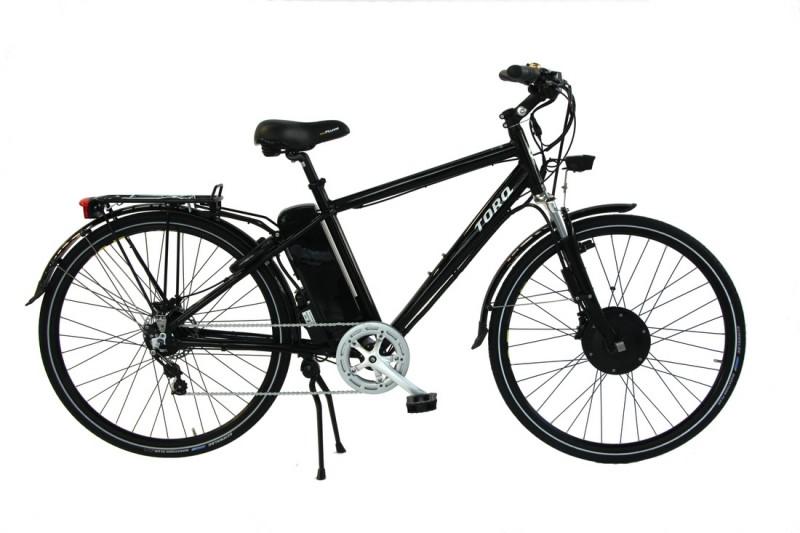 Ezee Torq: Tough and capable for remote and rough self-sufficient touring. Compare: Yuba All-terrain.
Ezee Torq: Tough and capable for remote and rough self-sufficient touring. Compare: Yuba All-terrain.
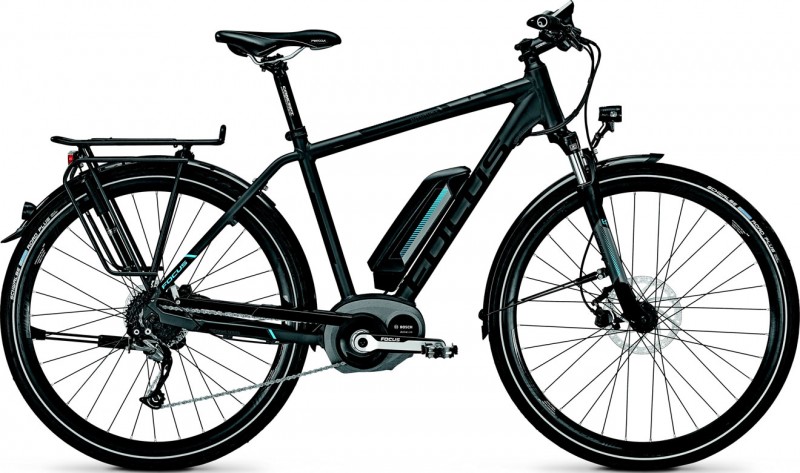 Focus Aventura 2: For travelling light on an ebike tour. Compare: Kalkhoff Aggatu, Riese & Muller Nevo.
Focus Aventura 2: For travelling light on an ebike tour. Compare: Kalkhoff Aggatu, Riese & Muller Nevo.
Conversion kits
You can also convert your own bike to become an ebike. This is the cheapest option and there are kits for many different sorts of bikes.
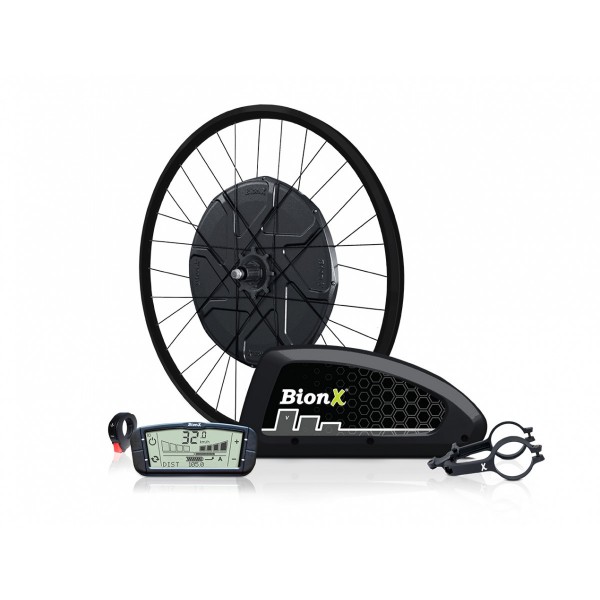 Bionx is a sophisticated conversion kit with great features
Bionx is a sophisticated conversion kit with great features
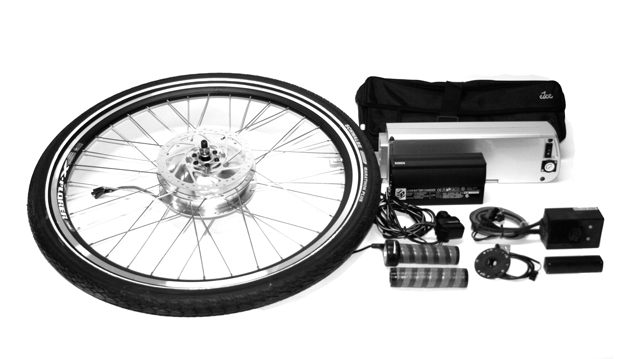 The Ezee conversion kit is an affordable hub motor kit that you can install yourself.
The Ezee conversion kit is an affordable hub motor kit that you can install yourself.
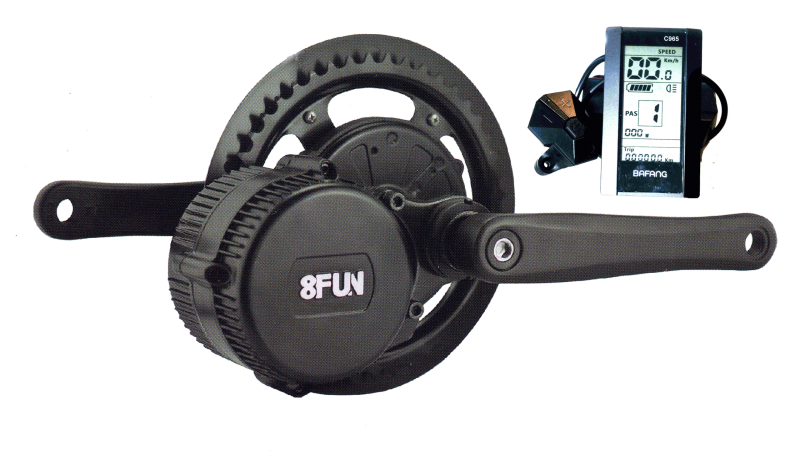 The Bafang 8Fun is the only kit that is a centre drive.
The Bafang 8Fun is the only kit that is a centre drive.
Ride On content is editorially independent, but is supported financially by members of Bicycle Network. If you enjoy our articles and want to support the future publication of high-quality content, please consider helping out by becoming a member.


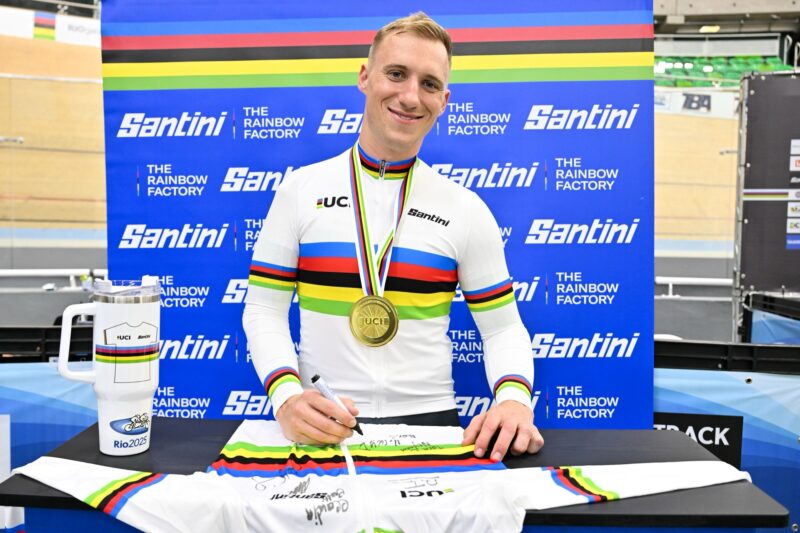
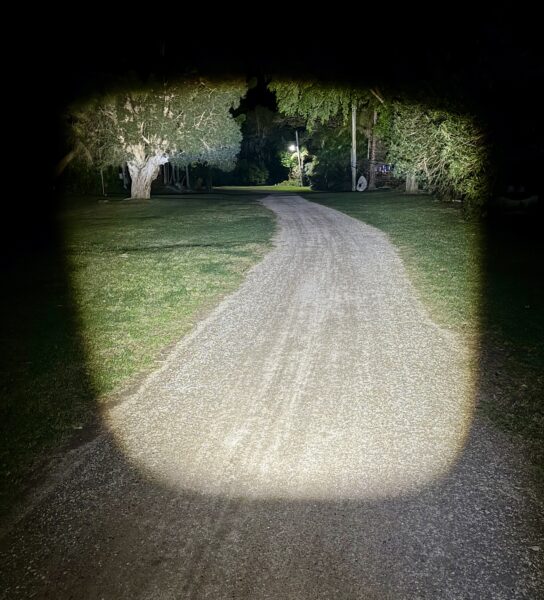

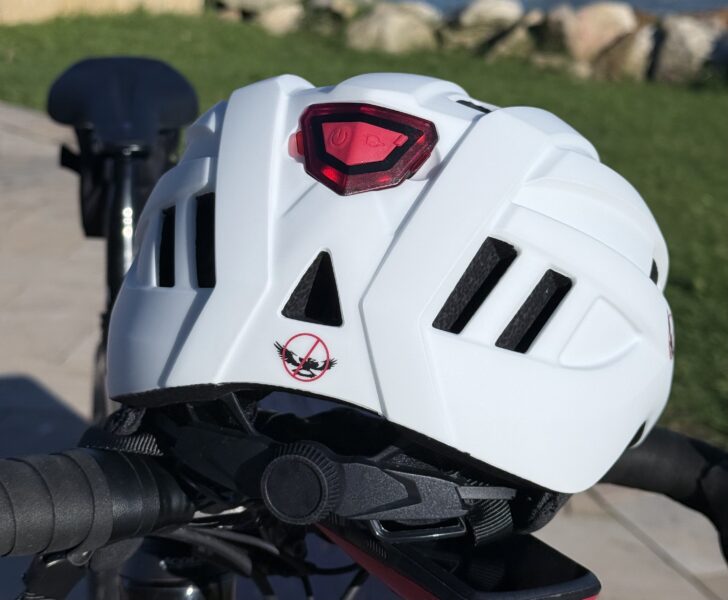
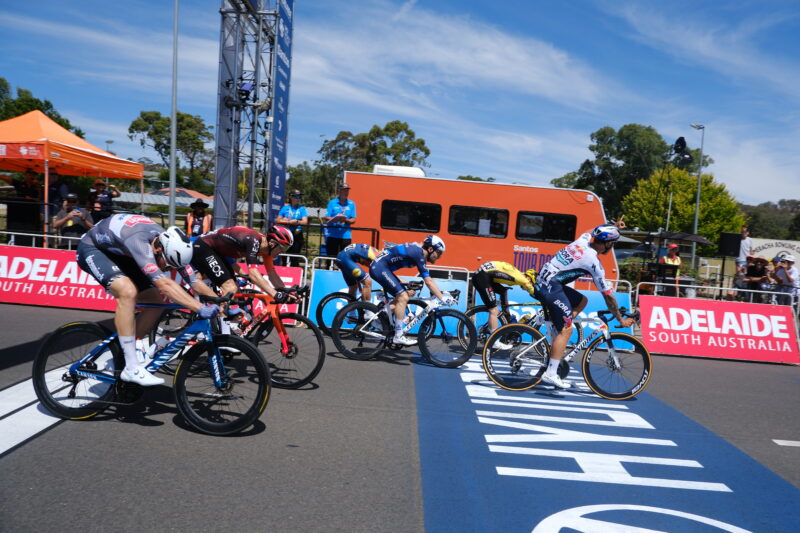

I have been riding an Ordica E-Bike with rear wheel drive for about 4 years & got great pleasure from it. However I just turned 84 and started finding it didn’t suit me in several ways. It was a male bike with high crossbar and mounting had become a problem. More importantly the motor didn’t cut in until about half a revolution of the pedals which made starting on a steep hill well nigh impossible. Having ridden bikes in europe with the Bosch centre drive I have now traded in the Ordica on a Peugeot step through with Bosch crank drive & importantly a walk button for pushing up ramps & very steep hills. It was expensive ($3690) but worth it. One drawback – the Bosch battery charger does not have a light to show it is on or when the battery is fully charged. Also the battery can’t be charged on the bike. This aside the quality is superb as would be expected from Peugeot.
Hi John, Great to see that you are still riding at your age :-). Not sure if your aware but ORDICA electric bikes as of 2016 are all with Mid Drive Crank Motor.
We have NEW models of step thru, step over and hardtail MTB arriving in late January 2017.
Dear John. You will be pleased to know all Bosch Gen 2 ebikes (since 2014) have a charge port on the side of the battery ‘dock’ on the bike, so you can charge the battery either on or off the bike. Look for a black rubber flap on the side hiding the charge port.